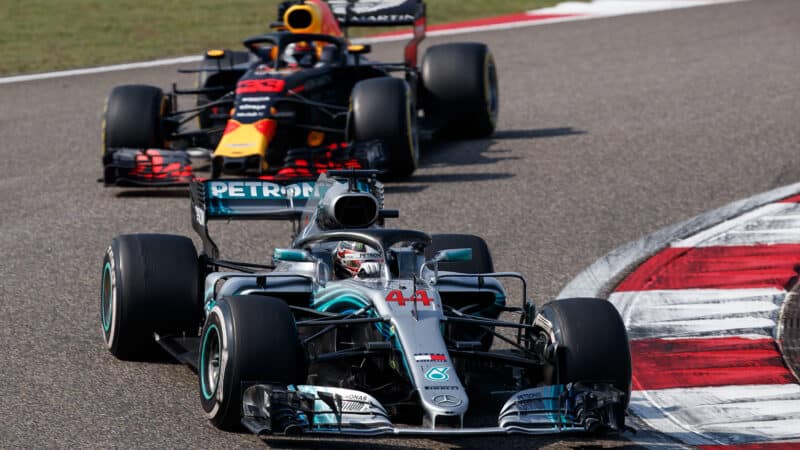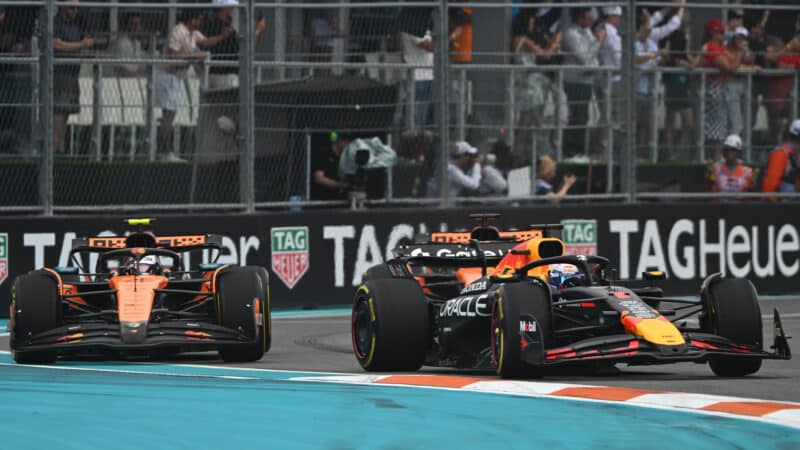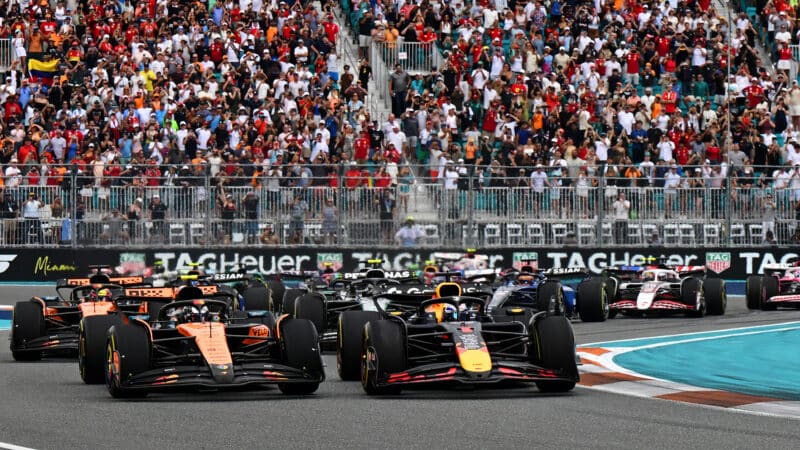Rewinding from there, Norris had got a run on the Red Bull because Verstappen had locked up into Turn 1 and ran wide on the exit, getting onto the kerbs and losing traction, allowing Norris to get himself almost fully alongside into T2. That initial wheel-locking mistake of Verstappen quite probably lost Norris the race, handing it instead to his Australian team mate Oscar Piastri.
The driving rules were different in 2018 but in Shanghai Verstappen found himself the victim of a “bit of oversteer” from the driver he was trying to pass around the outside: Lewis Hamilton. Taking to the run-off area in reaction, also at a place where that was the long way round, lost Verstappen that race. Handing it instead to his Australian team mate Daniel Ricciardo. The strange rhymes of history again. But Miami wasn’t really a repeat.
In both cases it was hard, not quite dirty, but certainly ruthless. In 2018 the Red Bulls of Verstappen and Ricciardo had benefitted from the timing of a safety car to get onto new tyres, with Hamilton (and the two Ferraris of Sebastian Vettel and Kimi Räikkönen) on much older rubber and their previous big gap ahead of the Red Bulls wiped. Hamilton and the Ferraris were sitting ducks waiting to be picked off. As he caught Hamilton, all Verstappen needed to do was wait for the DRS zone down the long back straight to make an easy pass into the hairpin. But before they got there, Hamilton played him, left a tempting gap around the outside of the fast Turn 7, not a conventional passing place. As Verstappen went for it and got partly alongside, Hamilton had ‘a bit of oversteer’, his car taking up the track width Verstappen had planned on using, forcing him onto the run-off. Was the oversteer induced? Could’ve been. There was plausible deniability there.

Miami ’25 had shades of Shanghai ’18
Getty Images
At Miami, Verstappen under the previous regulations might have used that same plausible deniability to have ‘had a bit of oversteer’, as he likely wouldn’t have gone into the turn so fast that he was always going to run wide and Norris would have been more fully alongside and their race would’ve continued through the corner (probably not without controversy). But now, the race is to the apex. Which makes for an unnatural set of choices for both drivers in this situation. The pattern of racing will change and Miami Turn 2 last Sunday was probably the first explicit example of that.








